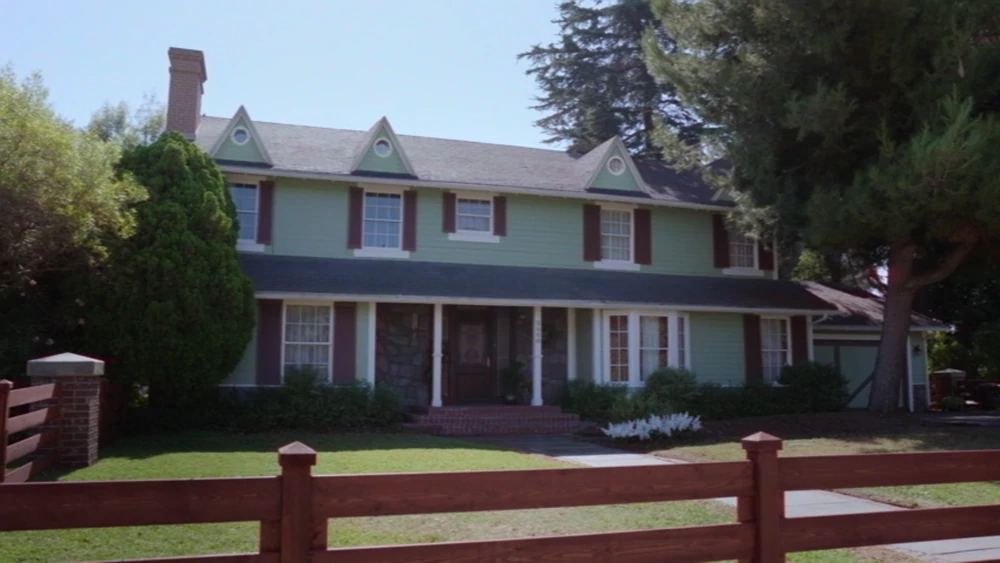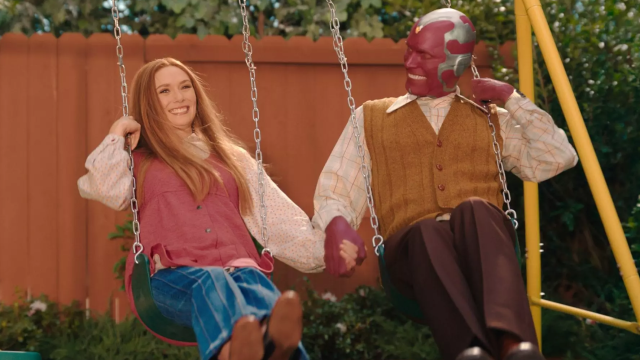Watching Disney+ and Marvel’s WandaVision as someone who I would say is, at best, loosely versed in the MCU means I missed a lot of the subtext Gizmodo has delved deep into. But as someone who regularly writes about destructive systems at Gizmodo’s other subsite, Earther, what stood out to me was not just the struggle between Wanda Maximoff (Elizabeth Olsen), Monica Rambeau (Teyonah Parris), SWORD, and the danger of the military-industrial complex. Rather it was the quiet destruction wrought by the show’s backdrop: the suburbs.
It’s rare for me to be current on pop culture. For example, I watched 2017’s Thor: Ragnarok on an aeroplane in 2019 so I could finally watch 2019’s Avengers: Endgame in 2020. So the fact that I have managed to watch WandaVision within a month(ish) of its final episode is a huge win for me. (Please clap.) But it was an intriguing concept, as many fans have already noticed. Suburbia has always been a central setting in sitcoms. The two grew in tandem in post-World War II America, with the neatly lined streets offering the perfect anodyne backdrop for everything from The Dick Van Dyke Show to The Brady Bunch to Bewitched. The dream of these areas as the perfect place to raise a family was in many ways reinforced by early sitcoms. Those series happily swept the racism in how suburbs were created under the rug and papered over the very real ecological and psychological damage they caused.
What struck me about WandaVision was how its characters quietly surfaced some of the underlying trauma of sprawl. Where the sitcoms it borrows from cover up those tears, WandaVision opens them up more and more as the show develops. On the surface, life in Westview — the fictional New Jersey town is perfect, given the state is almost one giant suburb bisected by four-lane roads, shopping plazas, and diners — appears to be about having it all. Wanda has the love of her life, a spacious home, and eventually, two young kids. Yet the inner pain of life in the ‘burbs begins to creep through as the show goes on.
Our first glimmer is when Vision breaks Wanda’s spell in “On a Very Special Episode…,” allowing his co-worker Norm to tell him a bit of what’s going on inside his head (short answer: it hurts). He does the same with Agnes in the next episode (though we later learn Agnes was, of course, faking it), and again hears about the pain of living in Wanda’s Westview. When Agnes/Agatha later does the same for a number of Westview residents, they beg not to go back under Wanda’s spell because all they can feel is her sadness. In “Previously On,” Wanda herself is forced to confront that pain by walking through a door Agatha’s basement to relive her past. Sadness is literally lurking in the basement of Westview, just underneath the surface.

The show never directly confronts the source of suburban pain, but it’s readily apparent in where the scenes take place. Perhaps the starkest example comes in WandaVision’s Halloween-themed episode where we finally get to the edge of Westview. It’s here the underlying bleakness of the suburbs come through as Vision walks through increasingly smaller neighbourhoods with fewer people, and cul-de-sacs that bleed into farmland not yet subdivided. The core lie that the suburbs bring people together is laid bare.
Marvel’s Westview reflects an enduring legacy of federal housing policies that began in the 1930s and accelerated in the coming decades to essentially institutionalise segregation. Subdivisions of the sitcom era were designed for no through traffic and they also iced out public transit, which meant everything was a car ride rather than a walk away. Transportation is now the largest source of American emissions, a testament to the enduring legacy of sprawl. The highways that eventually connected various suburban communities — highways we never see in WandaVision because of the artifice of the source material the show draws on — also plowed through historically Black and brown neighbourhoods, leaving behind toxic public health and dangerous climate impacts still with us today.
The desire outside Wanda’s world to go back to “how things were” is still a powerful undercurrent in modern American society as well. Former President Donald Trump tried to woo “the suburban housewife” during last year’s election, playing up the same tropes of “having it all” as seen on WandaVision and classic sitcoms. His inane comments about how Democrats would “make bigger windows into smaller windows” was an attempt to convince housewives that the picture windows — the likes of which grace Wanda and Vision’s home in Westview — would be gone. (Improbably, President Joe Biden hasn’t come for the big windows yet.)
But WandaVision shows why going back is ultimately impossible. In “The Series Finale,” Wanda collapses the Hex, acknowledging that the idealised lifestyle she’s tried to create simply can’t exist and that she must confront her pain. Similarly, we can’t undo the pain the suburbs have caused, but we also can’t ignore it.
To address the rot that suburbs have created means righting wrongs like redlining that left Black communities underinvested in, and building up density again so that walking or taking public transit to work is an option rather than simply driving alone in our cars. That could help reduce the toll on the planet and the isolation of suburban living. Because ultimately, the Hex that is our modern world is just as unsustainable as Wanda’s version.
